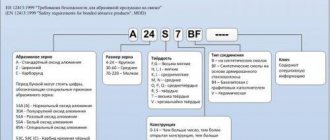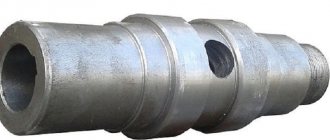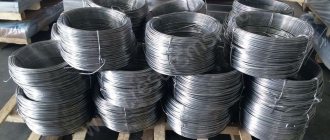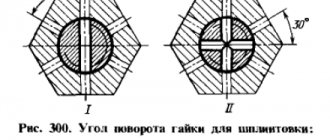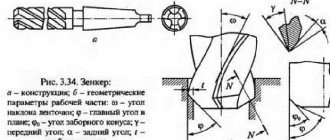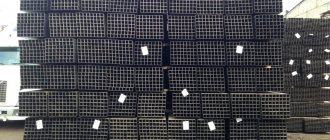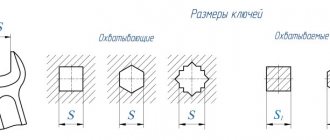1.BRANDS
1.1 Depending on the chemical composition, tin-lead solders are manufactured in the following grades:
antimony-free – POS 90, POS 63, POS 61, POS 40, POS 30, POS 10, POS 61M, POSK 50-18, POSK 2-18;
low antimony - POSSU 61-0.5, POSSU 50-0.5, POSSU 40-0.5, POSSU 30-2, POSSU 25-2, POSSU 18-2, POSSU 15-2, POSSU 10-2, POSSU 8 -3, POSSU 5-1, POSSU 4-6, POSSU 4-4.
Examples of symbols:
Solder in ingots brand POS 40:
Solder Ch POS 40 GOST 21930-76
The same, brand POSSu 18-0.5:
Solder Ch POSSu 18-0.5 GOST 21930-76
| Mass fraction, % | ||||||
| Solder grade | OKP code | Main components | ||||
| Tin | Antimony | Cadmium | Copper | Lead | ||
| Antimony-free | ||||||
| POS 90 | 17 2311 1100 04 | 89-91 | — | — | — | Rest |
| POS 63 | 17 2312 0100 | 62,5-63,5 | — | — | — | |
| POS 61 | 17 2312 1100 10 | 59-61 | — | — | — | Same |
| POS 40 | 17 2314 1100 00 | 39-41 | — | — | — | “ |
| POS 30 | 17 2321 1100 09 | 29-31 | — | — | — | “ |
| POS 10 | 17 2326 1100 06 | 9-10 | — | — | — | “ |
| POS 61M | 17 2312 1200 07 | 59-61 | — | — | 1,2-2,0 | “ |
| POSK 50-18 | 17 2313 1200 02 | 49-51 | — | 17-19 | — | “ |
| POSK 2-18 | 17 2343 1100 09 | 1,8-2,3 | — | 17,5-18,5 | — | “ |
| Low antimony | ||||||
| POSSu 61-0.5 | 17 2312 1400 01 | 59-61 | 0,05-0,5 | — | — | Rest |
| POSSu 50-0.5 | 17 2313 1100 05 | 49-51 | — | — | Same | |
| POSSu 40-0.5 | 17 2314 1200 08 | 39-41 | — | — | “ | |
| POSSu 35-0.5 | 17 2315 1200 03 | 34-36 | — | — | “ | |
| POSSU 30-0.5 | 17 2321 1200 06 | 29-31 | — | — | “ | |
| POSSu 25-0.5 | 17 2322 1200 01 | 24-26 | — | — | “ | |
| POSSu 18-0.5 | 17 2323 1100 10 | 17-18 | — | — | “ | |
| Antimony | ||||||
| POS 95-5 | 17 2311 1200 01 | Rest | 4,0-5,0 | — | — | — |
| POSSu 40-2 | 17 2314 1300 05 | 39-41 | 1,5-2,0 | — | — | Rest |
| POSSu 35-2 | 17 2315 1300 00 | 34-36 | 1,5-2,0 | — | — | Same |
| POSSu 30-2 | 17 2321 1300 03 | 29-31 | 1,5-2,0 | — | — | “ |
| POSSu 25-2 | 17 2322 1300 09 | 24-26 | 1,5-2,0 | — | — | “ |
| POSSu 18-2 | 17 2323 1200 07 | 17-18 | 1,5-2,0 | — | — | “ |
| POSSu 15-2 | 17 2324 1100 05 | 14-15 | 1,5-2,0 | — | — | “ |
| POSSu 10-2 | 17 2326 1200 03 | 9-10 | 1,5-2,0 | — | — | “ |
| POSSu 8-3 | 17 2326 1300 00 | 7-8 | 2,0-3,0 | — | — | “ |
| POSSu 5-1 | 17 2327 1100 0 | 4-5 | 0,5-1,0 | — | — | “ |
| POSSU 4-6 | 17 2327 1200 09 | 3-4 | 5,0-6,0 | — | — | “ |
| POSSU 4-4 | 17 2327 1300 06 | 3-4 | 3,0-4,0 | — | — | “ |
| Impurities, nothing more. % | |||||||||||||||
| Solder grade | |||||||||||||||
| Antimony | Copper | Bismuth | Arsenic | Iron | Nickel | Sulfur | Zinc | Aluminum | Lead | ||||||
| Antimony-free | |||||||||||||||
| POS 90 | 0,10 | 0,05 | 0,1 | 0,01 | 0,02 | 0,02 | 0,02 | 0,002 | 0,002 | — | |||||
| POS 63 | 0,05 | 0,05 | 0,02 | ||||||||||||
| POS 61 | 0,10 | 0,05 | 0,20 | 0,02 | |||||||||||
| POS 40 | 0,10 | 0,05 | 0,02 | ||||||||||||
| POS 30 | 0,10 | 0,05 | 0,02 | ||||||||||||
| POS 10 | 0,10 | 0,05 | 0,02 | ||||||||||||
| POS 61M | 0,20 | — | 0,01 | ||||||||||||
| POSK 50-18 | 0,20 | 0,08 | 0,03 | ||||||||||||
| POSK 2-18 | 0,05 | 0,05 | 0,01 | ||||||||||||
| Low antimony | |||||||||||||||
| POSSu 61-0.5 | — | 0,05 | 0,20 | 0,02 | 0,02 | 0,02 | 0,02 | 0,02 | 0,02 | — | |||||
| POSSu 50-0.5 | 0,05 | 0,10 | 0,02 | ||||||||||||
| POSSu 40-0.5 | 0,05 | 0,20 | 0,02 | ||||||||||||
| POSSu 35-0.5 | 0,05 | 0,02 | |||||||||||||
| POSSU 30-0.5 | 0,05 | 0,02 | |||||||||||||
| POSSu 25-0.5 | 0,05 | 0,02 | |||||||||||||
| POSSu 18-0.5 | 0,05 | 0,02 | |||||||||||||
| Antimony | |||||||||||||||
| POS 95-5 | — | 0,05 | 0,1 | 0,04 | 0,02 | 0,02 | 0,02 | 0,002 | 0,002 | 0,07 | |||||
| POSSu 40-2 | 0,08 | 0,2 | 0,02 | 0,08 | — | ||||||||||
| POSSu 35-2 | 0,08 | 0,02 | |||||||||||||
| POSSu 30-2 | 0,08 | 0,02 | |||||||||||||
| POSSu 25-2 | 0,08 | 0,02 | |||||||||||||
| POSSu 18-2 | 0,08 | 0,02 | |||||||||||||
| POSSu 15-2 | 0,08 | 0,02 | |||||||||||||
| POSSu 10-2 | 0,08 | 0,02 | |||||||||||||
| POSSu 8-3 | 0,1 | 0,05 | |||||||||||||
| POSSu 5-1 | 0,08 | 0,02 | |||||||||||||
| POSSU 4-6 | 0,1 | 0,05 | |||||||||||||
| POSSU 4-4 | 0,1 | 0,05 | |||||||||||||
ASSORTMENT
1. ASSORTMENT
1.1. The wire diameters and maximum deviations along them must correspond to those indicated in Table 1. (Changed edition, Amendment No. 1, 2, 3).
1.2. The diameters of round rods, the dimensions of the sides of triangular and square rods and the maximum deviations for them must correspond to those indicated in Table 2. (Changed edition, Amendment No. 3).
Table 1
mm
| Nominal wire diameter | Maximum deviation |
| 0,4 | ±0,05 |
| 0,5 | ±0,05 |
| 0,6 | ±0,06 |
| 0,8 | ±0,08 |
| 0,95 | ±0,08 |
| 1,0 | ±0,10 |
| 1,2 | ±0,10 |
| 1,5 | ±0,10 |
| 1,8 | ±0,10 |
| 2,0 | ±0,10 |
| 2,5 | ±0,12 |
| 3,0 | ±0,15 |
| 3,5 | ±0,17 |
| 4,0 | ±0,17 |
| 5,0 | ±0,17 |
| 6,0 | ±0,18 |
| 7,0 | ±0,20 |
table 2
mm
| Round rods | Triangular rods | Square bars | |||
| Nominal diameter | Maximum deviation | Side Size | Maximum deviation | Side Size | Maximum deviation |
| 8 | ±0,24 | 10 | ±0,30 | 5 | ±0,25 |
| 10 | ±0,30 | 12 | ±0,36 | 7 | ±0,35 |
| 12 | ±0,36 | 14 | ±0,42 | 9 | ±0,45 |
| 11 | ±0,55 | ||||
| 15 | ±0,45 | 16 | ±0,48 | 13 | ±0,55 |
| 40 | ±1,2 | 15 | ±0,55 | ||
1.3. The length of the rods should be (400±20) mm. The difference in the length of the rods in a pack should be no more than 10 mm. (Changed edition, Amendment No. 2).
1.4. The dimensions of the tapes must correspond to those indicated in Table 3, the maximum deviations of the sizes of the tapes are in Table 4.
Table 3
mm
| Nominal tape thickness | Nominal belt width |
| 0,8 | 8-10 |
| 1,0 | |
| 1,5 | 5-10; 15 |
| 2,0 | |
| 2,5 | |
| 3,0 | |
| 4,0 | |
| 5,0 |
Table 4
mm
| Nominal tape thickness | Maximum deviation | Nominal belt width | Maximum deviation |
| 0,8 | ±0,08 | 5,0 | ±0,5 |
| 1,0 | ±0,10 | 6,0 | ±0,6 |
| 1,5 | ±0,10 | 7,0 | ±0,7 |
| 2,0 | ±0,10 | 8,0 | ±0,8 |
| 2,5 | ±0,10 | 9,0 | ±0,9 |
| 3,0 | ±0,12 | 10,0 | ±1,0 |
| 4,0 | ±0,16 | 15,0 | ±1,0 |
| 5,0 | ±0,20 |
1.5. The diameters of the tubes and the maximum deviations of the outer diameter must correspond to those indicated in Table 5.
Table 5
mm
| Nominal tube outer diameter | Maximum deviation of outer diameter |
| 1,0 | ±0,05 |
| 1,5 | ±0,07 |
| 2,0 | ±0,07 |
| 2,5 | ±0,07 |
| 3,0 | ±0,09 |
| 3,5 | ±0,1 |
| 4,0 | ±0,12 |
| 5,0 | ±0,15 |
(Changed edition, Amendment No. 1, 3).
1.6. By agreement between the consumer and the manufacturer, it is possible to manufacture products of other shapes and sizes.
1.7. The length of the piece of wire and tube must be at least 20 m, the length of the tape - at least 10 m. (Changed edition, Amendment No. 1).
1.8. The granulometric composition of the solder powder must correspond to that indicated in Table 6.
Table 6
| Grid number according to GOST 6613 | Remaining powder on the sieve, %, no more | Passage of powder through a sieve, %, not less |
| 008 | 0,5 | — |
| 0071 | — | 80 |
The symbol for solders is indicated according to the following diagram:
With the following abbreviations: names of the profile assortment: wire - Prv; rod - Fri; tape - L; tube - T; powder - Por; section shapes: round - KR; square - KB; triangular - TRG. An “X” is placed in place of the missing indicator.
Examples of symbols
Solder in the form of round wire with a diameter of 2 mm, brand POSSu 61-0.5:
Solder Prv KR2 POSSu 61-0.5 GOST 21931-76
The same, in the form of a square rod with a square side of 9 mm, brand POSSu 40-0.5:
Solder PtKV 9.0 POSSU 40-0.5 GOST 21931-76
The same, in the form of a triangular cross-section rod with a side size of 14 mm, grade POS 61:
Solder PtTRG 14 POS 61 GOST 21931-76
The same, in the form of a tape 0.8 mm thick, 8 mm wide, brand POS 40:
Solder L 0.8×8 POS 40 GOST 21931-76
The same, in the form of a tube with an outer diameter of 5 mm filled with rosin brand POSSu 25-2:
Solder T 5 POSSU 25-2 GOST 21931-76
The same, in the form of powder brand POSSu 30-2:
Solder Por POSSu 30-2 GOST 21931-76
(Changed edition, Amendment No. 1, 2, 3).
TECHNICAL REQUIREMENTS
2.1 Tin-lead solders in ingots are manufactured in accordance with the requirements of this standard according to technological instructions approved in the prescribed manner.
The chemical composition of solders must comply with the requirements of the table.
2.2 The shape of solder ingots of all grades is given in Appendix 3. The dimensions of the ingots specified in Appendix 3 are given for the design and manufacture of molds.
Permissible deviations in mold dimensions must correspond to accuracy class 13 according to GOST 26645-85.
2.3 The surface of the pigs should be free of slag and other foreign inclusions. The presence of shells and cracks is allowed.
2.4 The physical and mechanical properties of solders are given in reference Appendix 1.
2.5. Areas of primary use of solders are given in the recommended appendix
2a. SAFETY REQUIREMENTS
2a.1. The processes of production and soldering (tinning) with tin-lead and tin-lead-cadmium solders may be accompanied by the release of toxic substances of lead and cadmium oxide, which, in accordance with GOST 12.1.007, belong to substances of the 1st hazard class.
2a.2. The entry of harmful substances into the human body during the production and use of solders is possible through inhalation of polluted air, as well as through water and food if workers do not observe personal hygiene. The effect of lead on the human body is to damage the nervous system, blood, and blood vessels. Cadmium affects the respiratory system, gastrointestinal tract, internal organs, skeletal muscles and bone tissue, and causes skin irritation.
2a.3. The maximum permissible concentration of lead in the air of the working area of industrial premises is 0.01 mg/m, cadmium oxide is 0.1 mg/m according to GOST 12.1.005.
2a.4. Monitoring the content of harmful substances in the air of the working area must be carried out in accordance with GOST 12.1.005 and GOST 12.1.007. Air samples are analyzed for lead and cadmium oxide content according to methods approved by the USSR Ministry of Health.
2a.5. The design, equipment and finishing of production premises and workplaces in the manufacture and use of lead-containing alloys must comply with the safety rules for the production of tin and alloys based on it, approved by the State Mining and Technical Supervision Authority of the USSR, and the sanitary rules for organizing the soldering of small products with alloys containing lead, approved by the Ministry of Health of the USSR.
2a.6. During loading and unloading operations, safety requirements must be observed in accordance with GOST 12.3.009 and safety rules for enterprises and organizations of the metallurgical industry, approved by the State Mining and Technical Supervision of the USSR.
2a.7. Safety requirements for the operation of industrial containers manufactured in accordance with GOST 14861 are in accordance with GOST 12.3.010.
2a.8. Safety requirements for determining the chemical composition are in accordance with GOST 1429.0.
2a.9. Those working with solders must undergo: safety instructions in accordance with GOST 12.0.004; training in methods of working with lead- and cadmium-containing solders and rules for handling protective equipment; preliminary upon entry to work and periodic medical examinations.
2a.10. Prevention of lead poisoning when working with solders - according to regulatory documentation approved by the USSR Ministry of Health.
2a.11. All work with molten tin-lead solders must be carried out in dry protective clothing and safety equipment. When working with molten tin-lead solders, servicing tinning and soldering baths, working with solder powder and transport and warehouse work, workers must use personal respiratory protection equipment - ShB-1 “Lepestok” respirators in accordance with GOST 12.4.028. To avoid burns, those working with molten solders must protect their faces with head shields in accordance with GOST 12.4.023.
2a.12. Those working with tin-lead solders must be provided with household premises in accordance with SNiP 2.09.04 for group of production processes IIIa. In sanitary premises, conditions must be created for workers to observe the rules of personal hygiene. (Changed edition, Amendment No. 3). Section 2. (Introduced additionally, Amendment No. 1).
ACCEPTANCE RULES
3.1 Solders are accepted in batches. Each batch should consist of pigs of the same brand and one heat. The mass of the party is not limited.
Each batch of ingots is accompanied by a quality document containing:
trademark or name and trademark of the manufacturer;
solder symbol;
chemical analysis results or confirmation of solder quality compliance
the requirements of this standard;
batch number;
net weight in kilograms;
date of manufacture.
3.2 Each pig of the batch is subjected to external inspection.
3.3 To control the chemical composition of the solder, every fiftieth pig is selected from the batch, but not less than five pigs at the beginning, middle and end of the casting of the melt.
At the manufacturing plant, it is allowed to check the chemical composition on a sample taken from the molten metal.
The manufacturer monitors the content of iron, sulfur, nickel, zinc and aluminum impurities in solders of all brands during the manufacturing process.
3.4 If unsatisfactory results of checking the chemical composition are obtained, a repeat check is carried out on a double sample taken from the same batch.
The results of repeated tests apply to the entire batch.
TEST METHODS
4.1 Inspection of the surface of pigs is carried out by visual inspection.
4.2. Sampling - according to GOST 24231-80. The shavings selected from all the ingots are crushed to a particle size of no more than 5 mm without control sieving, thoroughly mixed and reduced by quartering to a laboratory sample weighing 200 g.
The laboratory sample is melted in a crucible and ground on a belting to a particle size of no more than 2 mm, mixed and treated with a magnet. The laboratory sample is divided into two parts: one part is sent for chemical analysis, the other is saved in case of disagreement in assessing the quality of the batch.
Samples of liquid metal are taken in the form of splashes and rods with a diameter of 8 mm and a length of 75 mm.
4.3 Solder shavings containing more than 2.5% antimony are sifted through mesh No. 08 according to GOST 6613-86 to determine the fine fraction. The calculated data of the analysis results of both fractions are taken as the result of the analysis.
4.4 The chemical composition of solders is determined according to GOST 1429.0-77 - GOST 1429.15-77 or other methods that provide the required determination accuracy.
In case of disagreement in assessing the chemical composition of solder, its determination is carried out according to GOST 1429.0-77 - GOST 1429.11-77.
Application range of solder by category for tinning and soldering
- Solder POS 90 - internal seams of food utensils and medical equipment;
- Solder POS 61 - electrical and radio equipment, printed circuits, precision instruments with highly sealed seams, where overheating is unacceptable;
- Solder POS 63 - Group soldering of printed circuit boards, soldering on automated lines with wave solder, by dipping and pulling;
- Solder POS 40 - electrical equipment, parts made of galvanized iron with sealed seams;
- Solder POS 10 - contact surfaces of electrical devices, instruments, relays, for pouring and tinning control plugs of steam locomotive furnaces;
- Solder POS 61M - with electric soldering irons of thin (less than 0.2 mm thick) copper wires, foil, printed conductors in the cable, electrical and radio-electronic industries;
- Solder POSK 50-18 - for soldering parts sensitive to overheating, metallized ceramics, for step soldering of capacitors;
- Solder POSSu 61-0.5 - electrical equipment, soldering of printed circuit board elements, electrical machine windings, galvanized radio components under strict temperature requirements;
- Solder POSSu 50-0.5 - aviation radiators, for soldering food utensils with subsequent tinning with food tin;
- Solder POSSu 40-0.5 - sheet metal, windings of electrical machines, for soldering mounting elements, coil and cable products, radiator tubes, galvanized parts of refrigeration units;
- Solder POSSu 35-0.5 - lead cable sheaths of electrical products for non-critical purposes, thin-sheet packaging;
- Solder POSS 30-0.5 - zinc sheets, radiators;
- Solder POSS 25-0.5 - radiators;
- Solder POSSu 18-0.5 - heat exchanger tubes, electric lamps;
- Solder POSu 95-5 - for soldering in the electrical industry, for soldering pipelines operating at elevated temperatures;
- Solder POSSu 40-2 - refrigeration devices, thin-sheet packaging. General purpose solder;
- Solder POSSu 30-2 - in refrigeration equipment manufacturing, electric lamp production, automotive industry, for abrasive soldering;
- Solder POSSu 18-2, POSSu 15-2, POSSu 10-2 - for soldering in the automotive industry;
- Solder POSSu 8-3 - in electric lamp production;
- Solder POSSu 5-1 - parts operating at elevated temperatures, for tinning tubular radiators;
- Solder POSS 4-6 - for soldering tinplate, parts with rolled and riveted seams made of brass and copper, for puttying car bodies;
- Solder POSS 4-4 - in the automotive industry;
- Solder POSK-2-18 - metallized and ceramic parts.
The use of solder during tinning and soldering in crucibles and baths is not allowed.
Buy solder at a wholesale price at the AVALDA metallurgical plant by phone or order via e-mail, Online order.
Delivery to the transport company terminal is free. Back
LABELING, PACKAGING, TRANSPORTATION AND STORAGE
5.1 On each piece of solder the following is stamped:
a) trademark of the manufacturer;
b) brand of solder;
c) heat number;
5.1a Solder ingots are transported without packaging in transport bags or in containers in accordance with GOST 18477-79. Packages of pigs must be tied with steel packaging tape measuring at least 0.8x30 mm in accordance with GOST 3560-73, fastened with a lock. It is allowed to use fastening means that ensure the safety of the package in accordance with GOST 21650-76. The weight of the package is no more than 1250 kg. It is allowed to increase the package up to 1500 kg, provided that loading and unloading is carried out on the access roads of the consignor and consignee, while the floor of the car along the path of the loader must be lined with metal sheets 3-4 mm thick.
Schemes for laying and fastening solder ingots into bags are given in Appendix 4. When transporting by air, the ingots are packed in thick board boxes of type II-1 in accordance with GOST 2991-85, dimensions in accordance with GOST 21140-88, lined on the inside with plastic film in accordance with GOST 10354-82. The gross weight of the boxes is no more than 60 kg.
5.1b The designation of the solder brand is applied on the front surface of the pig on the left side with numbers corresponding to the percentage of the main components without indicating the letter designation POS, POSS, POS, POSK. The heat number is stamped on the right side of the front surface of the pig.
Examples of solder markings:
Solder grade POS 90:90.
Solder grade POS 61M: 61M.
5.2 Transport marking - according to GOST 14192-77.
5.3 Solder ingots are transported by all types of transport in covered vehicles in accordance with the transportation rules in force for transport of this type and the conditions of loading and fastening approved by the Ministry of Railways of the USSR.
5.4 Solder should be stored indoors. If the specified storage conditions are observed, the consumer properties of tin-lead solders do not change during storage.
Annex 1
Information
APPENDIX 1 (for reference). PHYSICAL AND MECHANICAL PROPERTIES OF SOLDER
APPENDIX 1 Reference
| Solder grade | Melting point, °C | Density, g/cm | Electrical resistivity, Ohm mm/m | Thermal conductivity, kcal/cm s deg | Temporary tensile strength, kgf/mm | Relative extension, % | Impact strength, kgf/cm | Brinell hardness, HB | |
| Solidus | Liquidus | ||||||||
| POS 90 | 183 | 220 | 7,6 | 0,120 | 0,130 | 4,9 | 40 | 4,2 | 15,4 |
| POS 61 | 183 | 190 | 8,5 | 0,139 | 0,120 | 4,3 | 46 | 3,9 | 14,0 |
| POS 40 | 183 | 238 | 9,3 | 0,159 | 0,100 | 3,8 | 52 | 4,0 | 12,5 |
| POS 10 | 268 | 299 | 10,8 | 0,200 | 0,084 | 3,2 | 44 | 3,2 | 12,5 |
| POS 61M | 183 | 192 | 8,5 | 0,143 | 0,117 | 4,5 | 40 | 1,1 | 14,9 |
| POSK 50-18 | 142 | 145 | 8,8 | 0,133 | 0,130 | 4,0 | 40 | 4,9 | 14,0 |
| POSSu 61-0.5 | 183 | 189 | 8,5 | 0,140 | 0,120 | 4,5 | 35 | 3,7 | 13,5 |
| POSSu 50-0.5 | 183 | 216 | 8,9 | 0,149 | 0,112 | 3,8 | 62 | 4,4 | 13,2 |
| POSSu 40-0.5 | 183 | 235 | 9,3 | 0,169 | 0,100 | 4,0 | 50 | 4,0 | 13,0 |
| POSSu 35-0.5 | 183 | 245 | 9,5 | 0,172 | 0,100 | 3,8 | 47 | 3,9 | 13,3 |
| POSSU 30-0.5 | 183 | 255 | 8,7 | 0,179 | 0,090 | 3,6 | 45 | 3,9 | 13,2 |
| POSSu 25-0.5 | 183 | 266 | 10,0 | 0,182 | 0,090 | 3,6 | 45 | 3,9 | 13,6 |
| POSSu 18-0.5 | 183 | 277 | 10,2 | 0,198 | 0,084 | 3,6 | 50 | 3,6 | — |
| POS 95-5 | 234 | 240 | 7,3 | 0,145 | 0,110 | 4,0 | 46 | 5,5 | 18,0 |
| POSSu 40-2 | 185 | 229 | 9,2 | 0,172 | 0,100 | 4,3 | 48 | 2,8 | 14,2 |
| POSSu 35-2 | 185 | 243 | 9,4 | 0,179 | 0,090 | 4,0 | 40 | 2,6 | — |
| POSSu 30-2 | 185 | 250 | 9,6 | 0,182 | 0,090 | 4,0 | 40 | 2,5 | — |
| POSSu 25-2 | 185 | 260 | 9,8 | 0,185 | 0,090 | 3,8 | 35 | 2,4 | — |
| POSSu 18-2 | 186 | 270 | 10,1 | 0,206 | 0,081 | 3,6 | 35 | 1,9 | 11,7 |
| POSSu 15-2 | 184 | 275 | 10,3 | 0,208 | 0,080 | 3,6 | 35 | 1,9 | 12,0 |
| POSSu 10-2 | 268 | 285 | 10,7 | 0,208 | 0,080 | 3,5 | 30 | 1,9 | 10,8 |
| POSSu 8-3 | 240 | 290 | 10,5 | 0,207 | 0,081 | 4,0 | 43 | 1,7 | 12,8 |
| POSSu 5-1 | 275 | 308 | 11,2 | 0,200 | 0,084 | 3,3 | 40 | 2,8 | 10,7 |
| POSSU 4-6 | 244 | 270 | 10,7 | 0,208 | 0,080 | 6,5 | 15 | 0,8 | 17,3 |
